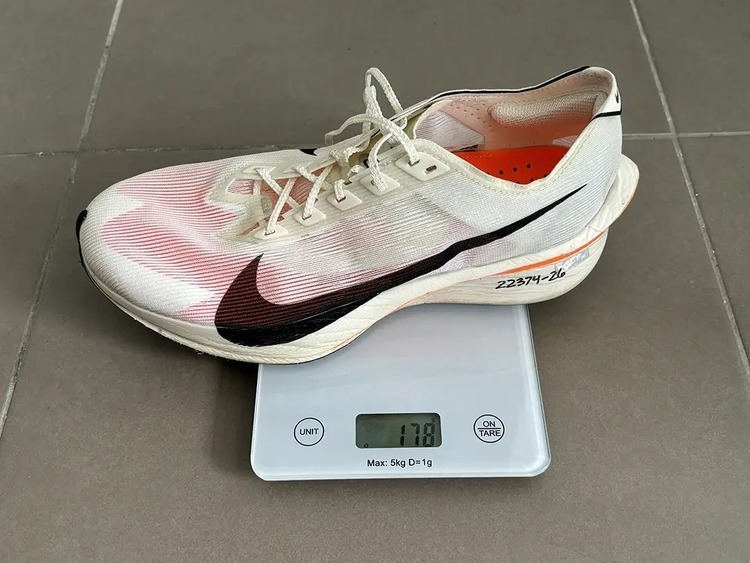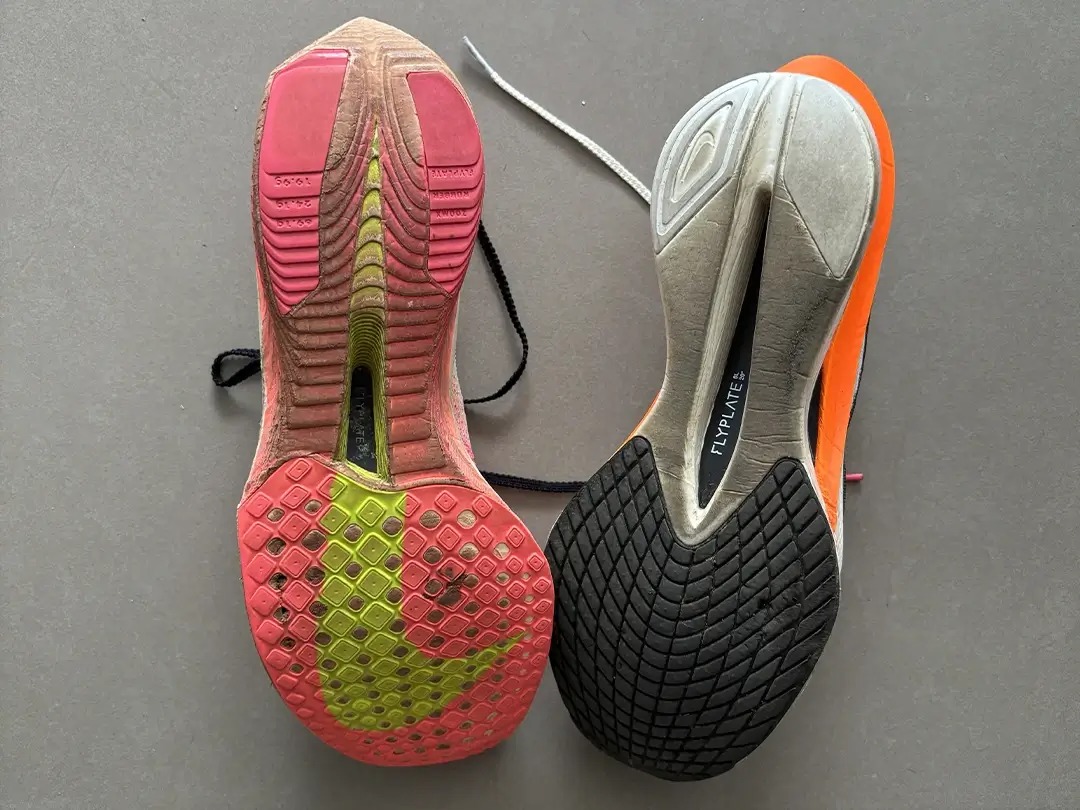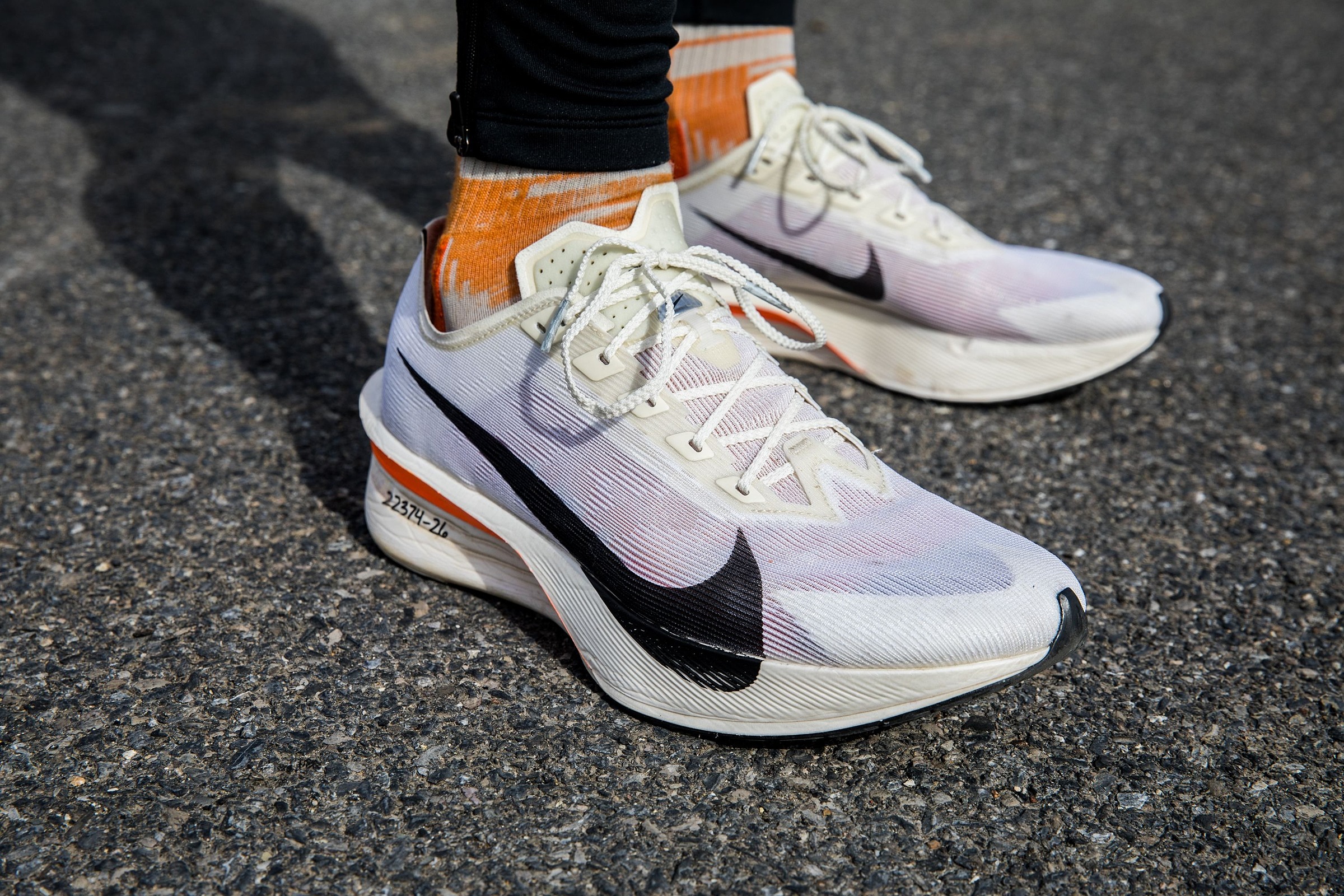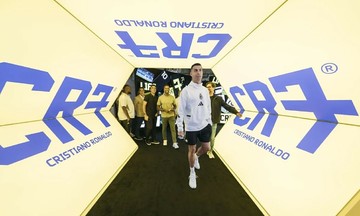The most obvious difference lies in the weight. Almost 20 grams lighter than version 3, the Vaporfly 4 further supports a runner's stride at higher speeds. At 167 grams, the Vaporfly 4 remains among the lightest marathon racing shoes.
In a US size 10, the Vaporfly 4 weighs 178 grams, almost 30 grams less than the third version. Image: Running Week
 |
Compared to the Vaporfly 3 (left), the 4th version (right) has a considerably thicker rubber outsole. Image: Running Week |
In terms of specifications, the Vaporfly 4 and Vaporfly 3 don't have many differences. The latest version has a stack height and heel-toe drop about 2 mm lower than its predecessor.
The Vaporfly 4 retains the core components of a Vaporfly super shoe: ZoomX foam cushioning and a Flyplate carbon fiber plate. However, Nike engineers have refined the carbon fiber plate. It's positioned closer to the heel and has a more aggressive curve in the midfoot. This ensures the 4th version maintains the signature Vaporfly propulsion and toe-off support.
The midsole structure of the Vaporfly 4 is also significantly different from the third version. The 8 mm drop of the Vaporfly 3 gave runners a feeling of being propelled forward, while the Vaporfly 4, with a 6 mm drop, offers a flatter feel. This gives the runner more control over the shoe's movement.
According to The Running Week, for runners who use the Vaporfly 4 and have the speed and fitness for the marathon distance, the lower drop midsole is a big plus, making strides feel more natural and agile. From landing to push-off, the runner's foot will feel the smooth energy return from the heel, through the midfoot, to the toe.
 |
The upper of the Vaporfly 4. Image: Runner's World |
Compared to the Vaporfly 3 (left), the 4th version (right) has a considerably thicker rubber outsole. Image: Running Week
The Vaporfly 4's outsole is a refinement that comes "full circle," with a thick rubber layer similar to versions 1 and 2, unlike the thin rubber of version 3. This change gives the latest version better durability and grip in wet conditions.
Compared to Nike's flagship racing shoe, the Alphafly, the Vaporfly has always had a more spacious upper. The only drawback of the third version's upper was the heel, which some runners found to be loose. The Vaporfly 4 addresses this with a more snug fit around the heel while maintaining space for the midfoot and toes. The tongue has also been widened and padded, significantly reducing chafing and providing better ankle lockdown.
 |
The upper of the Vaporfly 4. Image: Runner's World
With all these refinements, the Vaporfly 4 offers a noticeably different performance experience. For racing, the midsole structure demands more from the foot, giving runners with strong foot strength better control at high speeds. At moderate, sustained paces, the Vaporfly 4 is also more stable and somewhat more comfortable for runners who want to control their speed and conserve energy for speed workouts or repetitions.
Loyal Vaporfly fans will feel the shoe's DNA more clearly, like in the first versions: fast, streamlined, and powerful.
| Vaporfly 4 | Vaporfly 3 | |
| Weight (size 10 US) | 178 grams | 203 grams |
| Stack Height | 36 mm | 38 mm |
| Drop | 6 mm | 8 mm |
| Price | 6,609,000 VND | 5,287,199 VND |
To Thanh












